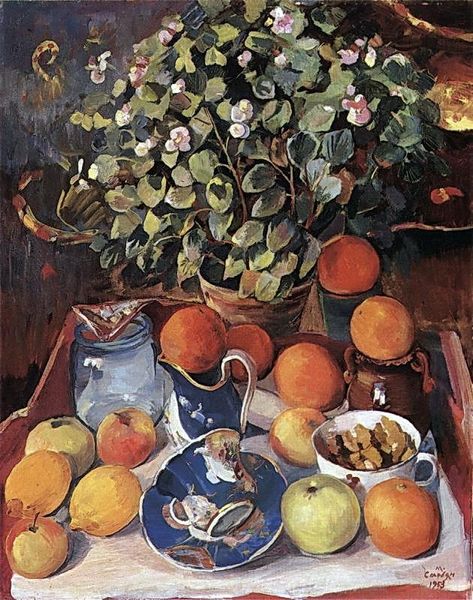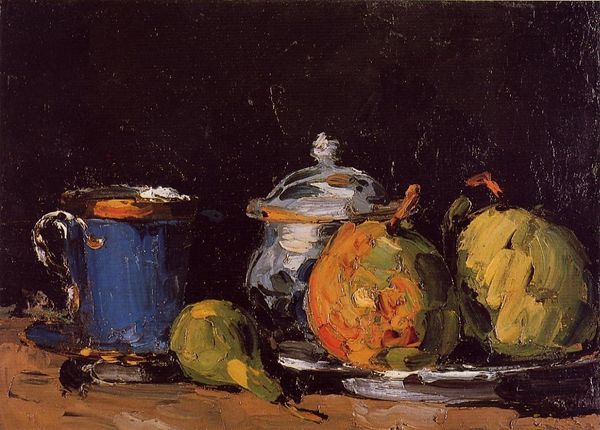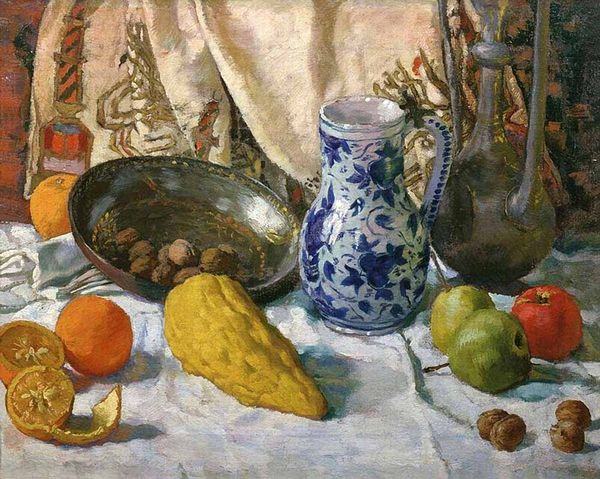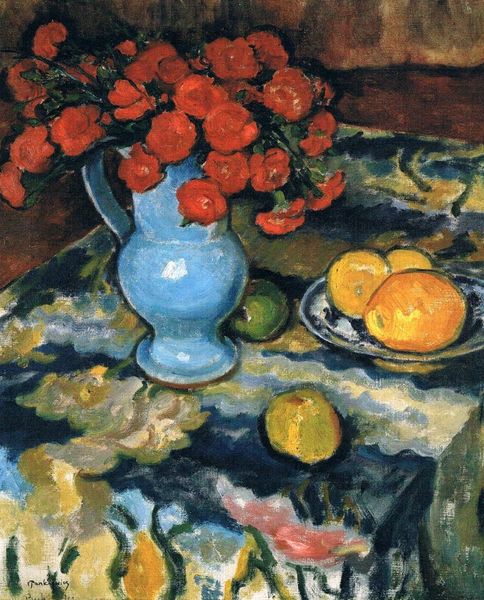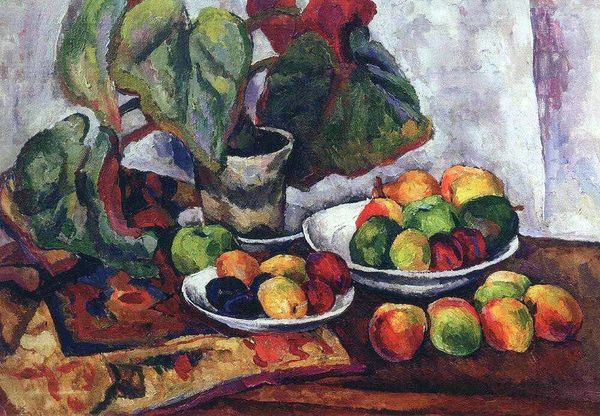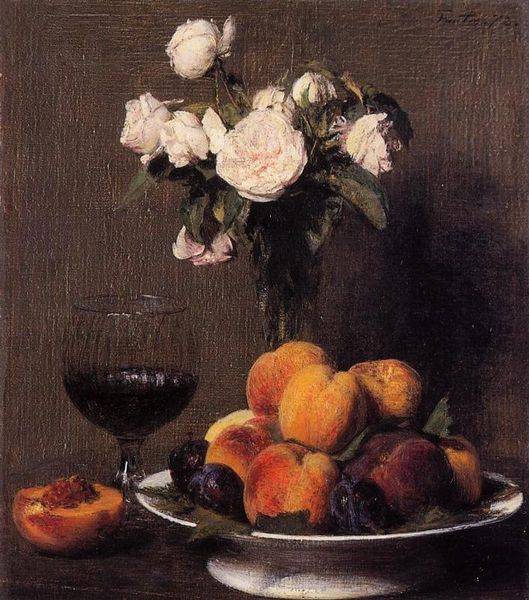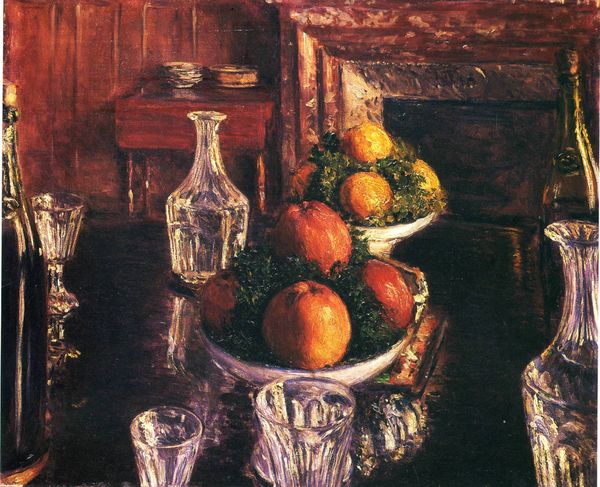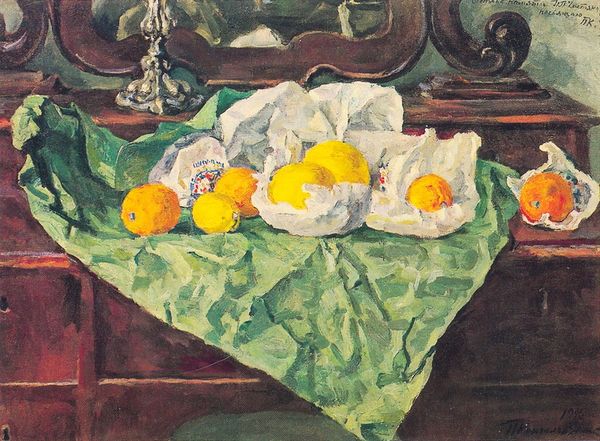
oil-paint, photography, impasto
#
still-life
#
gouache
#
oil-paint
#
photography
#
oil painting
#
impasto
#
fruit
#
realism
Copyright: Public domain
Editor: This is Eugene Lanceray's "Still Life. Shell and Apples" from 1917, created with oil paint. There's something almost domestic, yet also slightly unsettling about the combination of objects. What strikes you about it? Curator: The unsettling feeling might stem from the year it was painted – 1917, amidst immense social upheaval in Russia. While seemingly a simple still life, consider the symbolism. Apples, traditionally associated with temptation and knowledge, juxtaposed with a shell, often representing femininity and fragility. Editor: So, you're saying these everyday items might have a deeper meaning related to the artist's context? Curator: Precisely. Lanceray, coming from an artistic family with connections to the Russian aristocracy, likely experienced the anxieties of the revolution. Does this arrangement speak to a sense of the established order being disrupted, a vulnerability exposed? Notice the somewhat careless arrangement and how it might challenge traditional notions of a polished, bourgeois still life. How might the shell serve as a commentary on the displacement felt by many at the time? Editor: It's interesting how you frame it in terms of the social and political turmoil. I hadn't thought of the shell that way, but now I see a fragile beauty threatened by the changing world. Curator: Indeed. Considering these pieces not in isolation, but within their tumultuous historical moment allows for rich insights into the artist's possible anxieties and the broader societal tensions. This is not simply a display of objects; it's a silent narrative pregnant with the precarity of its time. Editor: I definitely see it differently now. It's more than just fruit and a shell; it's a coded message. Curator: Absolutely. It highlights how even seemingly apolitical subjects are laden with cultural meanings that resonate especially strongly during times of upheaval. Perhaps you'll view still lifes through a new lens now, understanding them as historical documents in disguise.
Comments
No comments
Be the first to comment and join the conversation on the ultimate creative platform.
